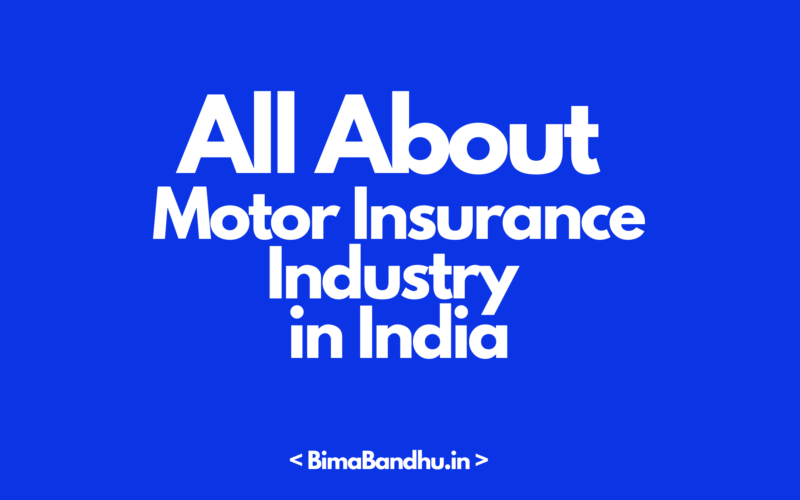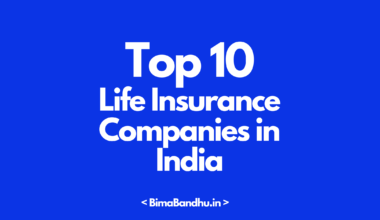In India, the rhythmic chaos of traffic seems to weave a picture of multiple journeys. However, if there is one crucial element that binds every vehicle owner together, it is motor insurance. As you traverse the bustling streets and expansive highways of this nation, the safety net of motor insurance accompanies you, ensuring that unexpected twists and turns do not derail your financial well-being.
In a nation where the roads are as diverse as its cultures, and where each state boasts its regulations, understanding the nuances of motor insurance becomes paramount. As vehicles become extensions of our identities and the road becomes a canvas of individual stories, this guide aims to equip you with knowledge and statistics about the motor insurance industry in India.
Whether you’re a new vehicle owner looking for guidance, an insurance professional seeking insights, or simply a curious mind eager to understand the gears that keep the motor insurance industry running, this guide to the Indian motor insurance market is designed to cater to your curiosity. Let’s uncover the past, present, and future of motor insurance in India.
Motor Insurance Industry Overview and Key Statistics Related to the Indian Market
In the bustling narrative of Indian roads where vehicles of all shapes and sizes embark on journeys of myriad purposes, motor insurance emerges as a steadfast companion. The motor insurance industry in India stands as a guardian of financial security, shielding vehicle owners like you from the uncertainties that traverse the highways of life.
In between all this, a range of pivotal statistics comes to the fore, painting a vivid narrative that highlights the current state and charts the course ahead for the motor insurance landscape in India. These statistics1, meticulously woven from a complex web of data, offer insights into the industry’s present contours, emerging trends, and its potential as a catalyst for bolstering road safety and financial resilience:
- The Indian motor insurance market is projected to have a value of around INR 0.90 trillion in 2023, with estimations suggesting a climb to INR 1.53 trillion by 2028. This trajectory indicates a consistent growth rate, manifesting as a Compound Annual Growth Rate (CAGR) of approximately 11.16% over the forecast period spanning from 2023 to 2028.
- During the year 2021, the Motor Insurance Industry in India took a substantial share of 34.1% in the collection of non-life insurance premiums. In the same period, health insurance accounted for 29.5% of these premiums in the fiscal year 2021. The aftermath of the Covid-19 pandemic has notably spurred a heightened demand for personal mobility solutions, causing a notable shift in the traditional landscape of vehicle ownership preferences. This change presents a promising prospect for motor insurance providers to tap into emerging opportunities.
Reflecting on the scenario in 2018, premiums generated from motor insurance held a remarkable proportion, approximately 39.4%, within the larger spectrum of non-life insurance premiums. This notable slice of the pie was primarily influenced by the surging demand emanating from middle-class households. Their inclination towards acquiring motor insurance coverage stood as a key driving factor in this trend. This phenomenon underscores how the preferences of the consumer demographic have evolved, with increasing recognition of the value that motor insurance offers in terms of safeguarding their financial interests.
Besides this, you should also know the following motor insurance market statistics2:
- As per the regulatory authority overseeing insurance activities in India, the motor insurance sector displayed a notable growth rate of 8.91% during the fiscal year 2018-19. This expansion allowed the motor insurance domain to capture a substantial portion, accounting for 38.08%, of the entire general insurance market in the country. The preceding year, which is the year just prior to 2018, showcased even more impressive results. Recent figures pertaining to motor insurance premiums unveiled that it stood out as the most thriving segment within the non-life insurance realm in India, boasting a noteworthy gross direct premium sum of INR 59,246.11 crore. This illustrates the robust performance and significance of the motor insurance sector within the broader insurance landscape of the nation.
Recommended Read: A Comprehensive Analysis of the Health Insurance Industry in India
Historical Growth Related to Indian Motor Insurance Industry
The journey of the motor insurance industry in India traces back to a time when the automobile was more than just a mode of transportation. Rather, it was a symbol of progress and aspiration. Over the years, this industry has navigated through various phases, driven by shifts in technology, regulatory changes, and evolving consumer behaviors. Delving into its historical growth provides us with insights into how motor insurance has transformed from a nascent concept to an integral part of the Indian insurance landscape.
Emergence and early stages
The origins of motor insurance in India can be dated back to 1907 when the Indian Mercantile Insurance Ltd.3 was set up to deal with all types of general insurance business. It was meant to address the risks associated with a burgeoning number of vehicles on the roads. During this period, motor insurance was primarily limited to covering damages caused to third parties, setting the foundation for the concept of third-party liability insurance.
Regulatory milestones
The regulatory landscape played a pivotal role in shaping the growth trajectory of the motor insurance industry. The enactment of the Motor Vehicles Act of 1914 gave local governments the responsibility to license and register vehicles/motorists4, This Act has undergone several amendments to reach the current version of the Motor Vehicle Act, 1988. This landmark legislation brought about a significant shift, making motor insurance a mandatory requirement for vehicle owners.
Technological advancements
As the Indian economy flourished and technology advanced, the motor insurance industry began to embrace digitization. The introduction of online platforms for policy purchase, claims processing, and customer service brought convenience and accessibility to policyholders. This transformation paved the way for quicker interactions and simplified transactions.
Demand surge and middle-class dynamics
The rise of the Indian middle class played a pivotal role in driving the demand for motor insurance. As more families acquired vehicles, the need for financial protection against accidents, damages, and theft surged. This growing demand, especially from middle-class households, contributed significantly to the expansion of the motor insurance sector.
Innovations and product diversification
In response to changing consumer needs and preferences, insurance companies began introducing innovative motor insurance products. Comprehensive policies, which cover both third-party liability and own vehicle damages, gained prominence. Add-on covers, such as zero depreciation and roadside assistance, further diversified the range of offerings, providing customized solutions to policyholders.
International influence and global practices
The Indian motor insurance industry has been influenced by global practices and trends. The concept of No Claim Bonus (NCB) gained traction, encouraging safe driving behavior and rewarding policyholders who did not file claims during the policy term. This practice aligned with international models and contributed to the industry’s growth.
From its inception as a response to the growing number of vehicles to its current position as a critical component of financial security, the Indian motor insurance industry’s journey has been marked by transformation and adaptation. As we move into the future, historical growth patterns provide valuable lessons and insights that can guide the industry towards greater resilience and innovation.
Also Read: A Comprehensive Analysis of the Car Insurance Industry in India
Challenges Related to Motor Insurance Industry in India
While the motor insurance industry in India has witnessed remarkable growth and evolution, its path has not been without obstacles. Navigating through a dynamic landscape of regulatory changes, market fluctuations, and changing consumer behaviors, the industry has grappled with a range of challenges that have shaped its course. Understanding the following challenges is crucial to devising strategies that enhance the industry’s efficacy and ensure the continued protection of both policyholders and insurers:
-
Uninsured vehicles and non-compliance
One of the persistent challenges faced by the motor insurance market in India is the prevalence of uninsured vehicles. Despite regulations mandating third-party liability coverage, a substantial number of vehicles continue to ply the roads without insurance. This not only puts uninsured vehicle owners at financial risk but also places additional burdens on insured motorists who might be involved in accidents with uninsured parties.
-
Fraudulent claims
The industry has grappled with the issue of fraudulent claims, where individuals or organized networks submit false or exaggerated claims to insurance companies. This not only increases claim settlement costs for insurers but also results in higher premiums for genuine policyholders. Detecting and preventing fraudulent claims requires robust mechanisms, such as advanced analytics and investigation units.
-
Complex claim settlements
The process of claim settlement can sometimes be cumbersome and complex, leading to dissatisfaction among policyholders. Delays in claim processing and disputes over coverage can erode the trust between insurers and policyholders. This is where ensuring transparent and efficient claim settlement procedures is essential for maintaining positive customer experiences.
-
Varied regional regulations
India’s federal structure leads to a diverse range of regulations governing motor insurance across states. This can create challenges for insurance companies operating across multiple regions, as they need to navigate varying legal requirements and regulatory frameworks. Harmonizing regulations and streamlining processes could contribute to a more cohesive industry.
-
Rising medical costs
In cases where motor accidents result in injuries, the medical costs associated with treatment and rehabilitation have been on the rise. This trend directly impacts insurance claim amounts and settlements. The industry needs to continuously assess and adjust coverage limits to ensure that policyholders receive adequate support in the face of escalating medical expenses.
-
Changing consumer preferences
As the Indian market evolves, consumer preferences for vehicles and mobility solutions are also changing. The rise of shared mobility services, electric vehicles, and autonomous technologies introduces new dimensions to the insurance landscape. The industry must adapt to cater to the insurance needs of emerging vehicle types and usage patterns.
-
Lack of awareness
Despite efforts to increase awareness about the importance of motor insurance, a significant portion of the population remains unaware of its benefits or obligations. This lack of awareness can result in individuals driving without insurance, leaving them vulnerable to financial liabilities in case of accidents.
Addressing these challenges requires a collaborative effort between insurance companies, regulatory bodies, and other stakeholders like all-inclusive insurance information platforms.
Current Landscape and Trends Related to Motor Insurance Industry
The Indian motor insurance landscape is a dynamic canvas, where trends emerge and the industry adapts to the evolving needs and preferences of vehicle owners. From technological advancements to shifting customer behaviors, the industry has undergone transformative changes that shape its present and lay the groundwork for its future. Exploring the current landscape and trends provides valuable insights into the direction the motor insurance industry is headed.
-
Digital transformation
The digital revolution has ushered in a new era for the motor insurance industry in India. Online platforms have become integral to the purchase of policies, renewal procedures, and claims processing. Customers now have the convenience of comparing insurance products, accessing policy documents electronically, and interacting with insurers through digital channels. This shift towards digitalization enhances customer experiences and streamlines administrative processes.
-
Telematics and usage-based insurance
Telematics technology, which involves collecting data from vehicles, is gaining traction in the motor insurance market. With the advent of connected cars and devices, insurers can gather real-time information about driving behavior, mileage, and usage patterns. This data enables the development of usage-based insurance models, where premiums are calculated based on actual driving habits, encouraging safe driving practices.
-
Personalization and add-ons
Insurance companies are increasingly offering personalized motor insurance packages that cater to individual needs and preferences. Policyholders can opt for add-on covers such as zero depreciation, engine protection, and roadside assistance to enhance their coverage. This trend aligns with consumer demand for tailored solutions that align with their specific requirements.
-
Claim automation and AI
Artificial intelligence (AI) and automation are revolutionizing the claims settlement process. Insurers have started using AI algorithms to assess damages, estimate claim amounts, and expedite the claims approval process. This not only accelerates claim settlements but also ensures accuracy in evaluating damages, improving overall customer satisfaction.
-
Sustainable practices
With growing concerns about the environment, sustainability has entered the motor insurance discourse. Insurers are exploring ways to incentivize the adoption of eco-friendly vehicles, offering reduced premiums for electric and hybrid cars. This aligns with global efforts to reduce carbon emissions and encourages policyholders to make environmentally conscious choices.
-
Behavioral analytics for risk assessment
Insurers are leveraging behavioral analytics to assess risk more accurately. By analyzing data on driving behavior, habits, and patterns, insurers can offer customized premium rates that reflect a policyholder’s actual risk profile. This approach not only rewards safe drivers but also encourages responsible driving practices.
-
Regulatory changes and compliance
The regulatory landscape governing motor insurance in India is also evolving. Recent changes have aimed at enhancing the protection of policyholders, improving claim processes, and ensuring that uninsured vehicles are held accountable. Staying abreast of these regulatory shifts is essential for insurers to maintain compliance and offer comprehensive coverage.
Also Read: A Comprehensive Analysis of the Bike Insurance Industry in India
Implications and Future of the Motor Insurance Industry in India
The Indian motor insurance industry stands at a crossroads, where the confluence of evolving trends, technological advancements, and changing societal dynamics is shaping its trajectory. As we gaze into the future, it’s evident that the industry’s landscape will continue to transform, presenting a range of implications and opportunities that will redefine the way motor insurance operates in the coming years.
-
Technological integration
The future of the motor insurance industry is intertwined with technology. Continued advancements in telematics, artificial intelligence, and data analytics will revolutionize risk assessment, claims processing, and customer interactions. This way, insurers can harness real-time data from connected vehicles to personalize policies, offer dynamic pricing, and enhance overall customer experiences.
-
Shift in risk paradigm
As autonomous vehicles and Advanced Driver Assistance Systems (ADAS) become more prevalent, the risk landscape will undergo a significant shift. Insurers will need to adapt to assess risks associated with new technologies and determine liability in case of accidents involving autonomous vehicles. The emergence of shared mobility services will also necessitate innovative coverage models.
-
Sustainable mobility
The global push towards sustainability and eco-friendly practices will influence the motor insurance industry. Insurers may incentivize the adoption of electric and hybrid vehicles by offering specialized coverage and reduced premiums. This aligns with the industry’s commitment to environmental responsibility and resonates with customers who prioritize sustainable choices.
-
Data privacy and cybersecurity
As vehicles become more connected, the potential for data breaches and cybersecurity threats increases. Insurers will need to invest in robust cybersecurity measures to protect customer data and ensure the secure functioning of connected vehicles. The integration of cybersecurity coverage within motor insurance policies may become a norm.
-
Customer-centric ecosystems
The future motor insurance landscape is most likely to revolve around customer-centric ecosystems. Insurers will collaborate with technology providers, automakers, and service providers to offer holistic solutions. This could include bundled insurance offerings with vehicle purchases, seamless claims processing, and integrated services for vehicle maintenance.
-
Regulatory evolution
Regulatory frameworks governing motor insurance will continue to evolve in response to changing market dynamics. Stricter regulations may be introduced to ensure the safety of emerging technologies and to address issues like uninsured driving. The industry will need to adapt to these changes while maintaining compliance and transparency.
-
Predictive analytics
Predictive analytics will play a pivotal role in risk assessment and pricing. By analyzing historical data and identifying patterns, insurers can anticipate potential risks and tailor coverage accordingly. This proactive approach will empower policyholders with insights to make informed decisions.
Conclusion
From its nascent beginnings to its present state, the motor insurance industry in India has journeyed through regulatory shifts, technological revolutions, and evolving consumer expectations.
As we reflect on this comprehensive exploration, it becomes clear that the motor insurance landscape is not just about financial protection but a testament to the commitment to safeguarding dreams, aspirations, and peace of mind. Various implications point towards a future where innovation is the driving force.
The road ahead holds promise, as the industry embraces sustainable practices, personalization, and real-time insights to create an insurance experience that resonates with the modern vehicle owner. With each challenge encountered, the industry has exhibited resilience and adaptability, emerging stronger and more equipped to navigate the ever-evolving demands of a dynamic society.
Just as vehicles traverse new horizons, so will the industry steer towards innovation, ensuring that it remains a reliable companion on the journey towards a safer, more connected, and secure future.
References and Citations






